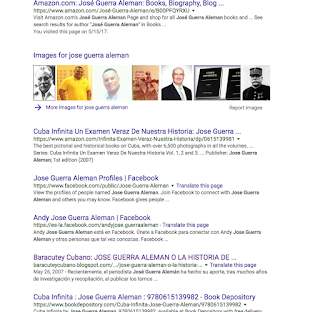Special Collections Internship at the University of Central Florida
Week 1: Discovery
Landed to a New Place!
Never heard of this man! His son gave 12 boxes of his father’s work to the Special Collection. For years, these boxes have not been organized because there was one major problem. No one that worked or interned spoke Spanish. Here I come into the equation. I know Spanish. Both read and speak it. Beforehand, I did a little research on this man. When I googled his name, there was little information on him. It had few of his books he published and the only biography I found was just commemorating his memory (fig. 1). My first question as I started looking at his documents was why is he so important to take the time and archive his work. I uncovered that he added to the Cuban historiography. He compiled notes, photos, newspaper, and so on from his own experience and from others into four-volume encyclopedia of Cuban history through the centuries called Cuba Infinita.
Landed to a New Place!
Hello to all! I have finally found an internship where I can work at. I am excited for this opportunity at the University of Central Florida Special Collections. First of, you all may be wondering who am I. Well, I am Samuel Ortiz, a graduate student from the University of Central Florida. I am in the traditional History track. In addition, I want to be able to see another perspective of what a historian can do. I mean seeing history at different perspectives from a historian angle is what scholars are supposed to do in their research. I wanted to apply and gain new skills other than an academic professor. In that case, I have always been drawn to archivist work, especially digital.
My first hope was to be able to explore in that area. In reality, the staff told me that there are not many projects that follow under the title of digital, but they were willing to provide me an idea of what they already have in the library or anything close to that. Now, I was actually opened to work with anything and flexible in that matter. I sat with David Benjamin, the Department head, Mary Rubin and Burak Orgeten, Senior Archivists. They gave me different projects that could interest me. Then, one hit me. I heard the name
Jose Guerra Aleman.
 |
| Fig. 1 A Google Search for Jose Guerra Aleman |
To back track, my first day was learning the protocols and basic training. The binder provided some information that helped me. It showed the levels of arrangement: collection, series, folder, and item level. This is what I needed to know to start archiving the materials. It has been a challenge in archiving in the right arrangement because some materials can be placed in multiple places; one document can mention Cuba’s history, but at the same time can be a historical figure in Cuba literature. My goal is to have Folder 1: Civic life where it will contain series of geography, music, literature, and history; Folder 2: Contributing works will contain series of his texts (published and unpublished), his notes, and his manuscripts of his books; Folder 3: Influences will contain series of authors, poets, and scientists that he used and inspired; Folder 3: Photos, memorabilia, letters will contain series of his professional materials (research) and personal (family-related). As I mentioned, these materials are stored in a box (fig. 2).
 |
| Fig. 2 Jose Guerra Aleman Collection Box 5 |
So take a journey into the "magic school bus" and enter into Cuba's past decades. Buckle up and enjoy the ride. Vámonos!



Comments
Post a Comment